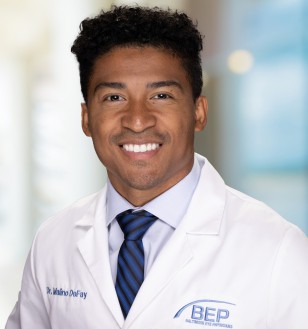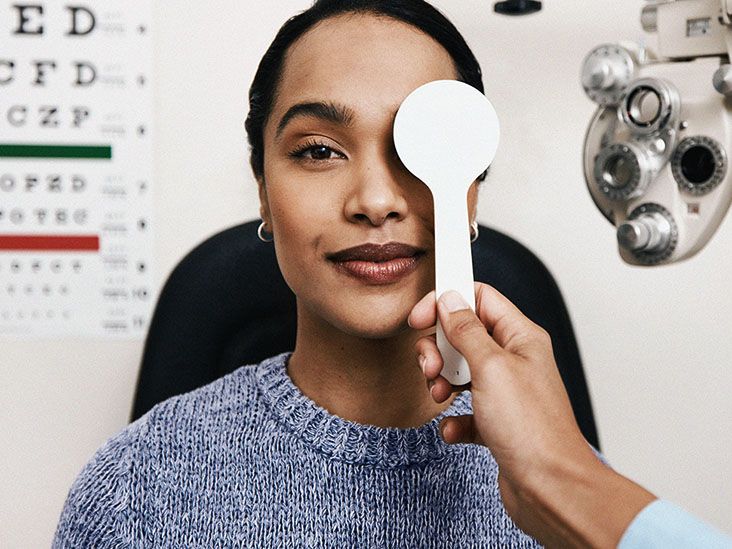Find a Caring Eye Doctor Optometrist in Riverside for Your Family members
Find a Caring Eye Doctor Optometrist in Riverside for Your Family members
Blog Article
The Comprehensive Eye Exam: What to Anticipate During Your Visit to the Eye Doctor
A browse through to the eye medical professional for a detailed eye exam is even more than a routine check-up; it is a crucial action in securing your visual wellness. What precisely happens throughout the eye health analysis, and exactly how does it affect the prescription process?
First Appointment
The first examination during an eye examination functions as a critical foundation for recognizing an individual's aesthetic health requirements. This phase establishes the tone for the whole evaluation procedure, allowing the eye doctor to collect vital information regarding the patient's medical history, way of life, and specific vision issues. By diligently assessing any type of pre-existing conditions, medicines, or previous surgeries, the eye care professional can customize the examination to attend to private requirements properly.

In addition, the preliminary assessment is an opportunity for individuals to voice any type of questions or worries, fostering a joint connection with their doctor. This communication not just makes sure that the individual feels notified and comfortable yet also encourages them to participate actively in their eye wellness administration. Collectively, these conversations allow the optometrist to devise a personalized exam plan, guaranteeing optimum treatment and accurate medical diagnosis.
Visual Skill Examination
Starting the core elements of an eye examination, the visual skill test is created to assess the sharpness and quality of a client's vision. This essential assessment aids determine exactly how well an individual can discern letters or signs at a standard distance, usually making use of a Snellen chart (Eye Doctor). The graph consists of rows of letters that decrease in size inside out, with the individual positioned at a customary range of 20 feet
Throughout the examination, the client is asked to cover one eye and review out loud the tiniest line of letters they can see plainly. This process is duplicated for the other eye. The results are taped as a portion, with 20/20 vision indicating normal visual acuity-- where the person can see at 20 feet what an individual with regular vision can see at that range.
The aesthetic acuity test also determines prospective refractive mistakes such as astigmatism, nearsightedness, or hyperopia, which may require rehabilitative lenses. By developing a standard of aesthetic efficiency, the examination is an essential diagnostic tool that helps the eye care specialist in developing a proper treatment plan customized to the patient's distinct visual needs.
Eye Health Assessment
Following the visual acuity examination, a thorough eye wellness analysis is performed to ensure the general wellness of the eyes. This vital section of the eye exam involves an extensive evaluation of both the outside and interior frameworks of the eye. The ophthalmologist or optometrist starts by taking a look at the eyelids, cornea, conjunctiva, and sclera for any type of signs of infection, inflammation, or problems. Using customized tools like a slit lamp, the professional gets an amplified sight of the eye's anatomy, enabling thorough assessment.
With the usage of ophthalmoscopy or fundus digital photography, the retina, optic nerve, and blood vessels are carefully more information reviewed. In many situations, student extension is executed to enhance exposure of the internal eye structures, although this may result in short-lived light level of sensitivity for the client.
Furthermore, intraocular pressure is determined to evaluate for glaucoma danger. This is normally done utilizing tonometry, which can identify elevated pressure levels that might suggest prospective damages to the optic nerve. Jointly, these analyses create an extensive analysis to preserve ocular health.
Refraction and Prescription
Refraction is a sophisticated treatment conducted by eye care specialists to establish the exact lens power required to fix refractive errors such as nearsightedness, hyperopia, presbyopia, and astigmatism. The objective of this treatment is to examine how light bends as it passes via the eye, enabling the specialist to establish whether restorative lenses are required for boosted visual acuity.
Throughout the refraction process, the patient is asked to browse a phoropter, a gadget which contains various lenses. The expert will systematically transform these lenses and ask the patient to compare clarity in between alternatives until the ideal possible vision is attained. This treatment is critical in crafting an exact prescription that defines the suitable lens power for spectacles or contact lenses.
The prescription acquired from this procedure not only maximizes vision however also functions as a foundation for picking suitable corrective glasses. It is vital to ensure that prescriptions are on a regular basis upgraded, as modifications in vision can occur over time, stressing the significance of routine eye assessments. This precise focus to information assists preserve clear, comfortable vision in life.
Follow-Up Suggestions

During a follow-up go to, the eye doctor will conduct a collection of examinations to examine aesthetic skill and look for any kind of modifications in vision that may necessitate an upgrade to the prescription. Furthermore, the follow-up offers a chance to review any discomfort or issues experienced with present eyewear. Changes can be made to ensure convenience and efficacy, whether via lens modification or framework changes.
For clients with recurring conditions such as glaucoma, diabetes-related eye issues, or macular deterioration, even more regular follow-ups may be required. These appointments are important for taking care of and potentially slowing the development of eye illness. Sticking to these referrals can special info dramatically contribute to preserving aesthetic wellness and stopping lasting complications.
Conclusion
The extensive eye exam is a vital check my source procedure for maintaining aesthetic wellness, incorporating a comprehensive evaluation of clinical background and vision concerns. Key elements consist of the aesthetic skill examination, which examines eyesight clearness, and the eye health assessment, which checks out the total problem of the eyes.
A browse through to the eye doctor for an extensive eye examination is more than a regular exam; it is an essential step in securing your aesthetic wellness.Kicking off the core elements of an eye evaluation, the aesthetic skill examination is developed to evaluate the intensity and clarity of a client's vision.Following the visual acuity test, a detailed eye wellness evaluation is carried out to make sure the overall wellness of the eyes. These sees permit the eye care expert to monitor adjustments in vision, upgrade prescriptions, and evaluate the total health of the eyes. Trick parts consist of the visual acuity examination, which evaluates eyesight clearness, and the eye health and wellness assessment, which analyzes the general problem of the eyes.
Report this page